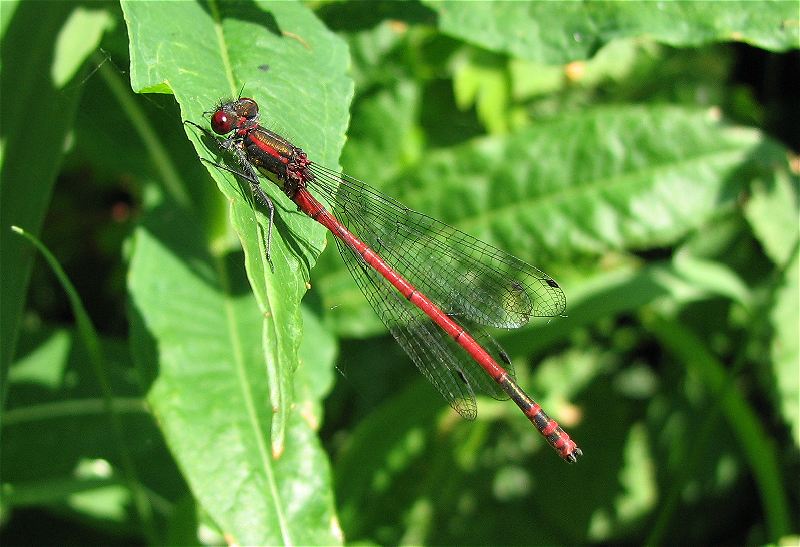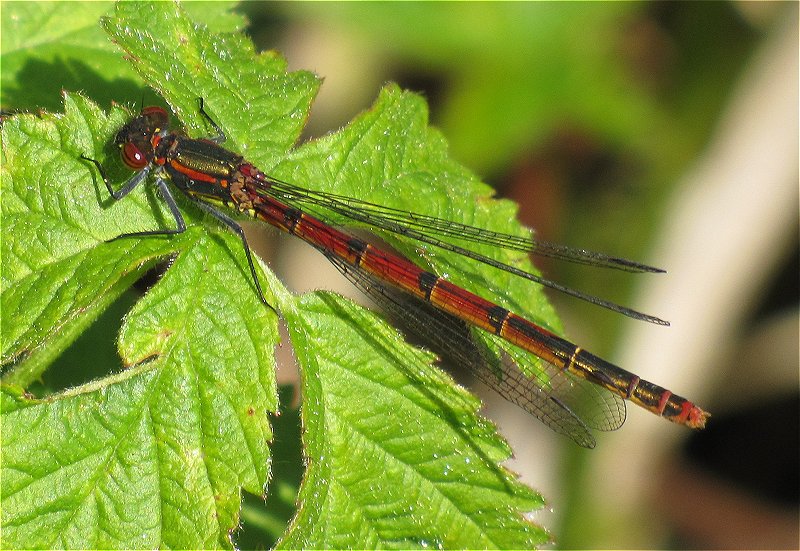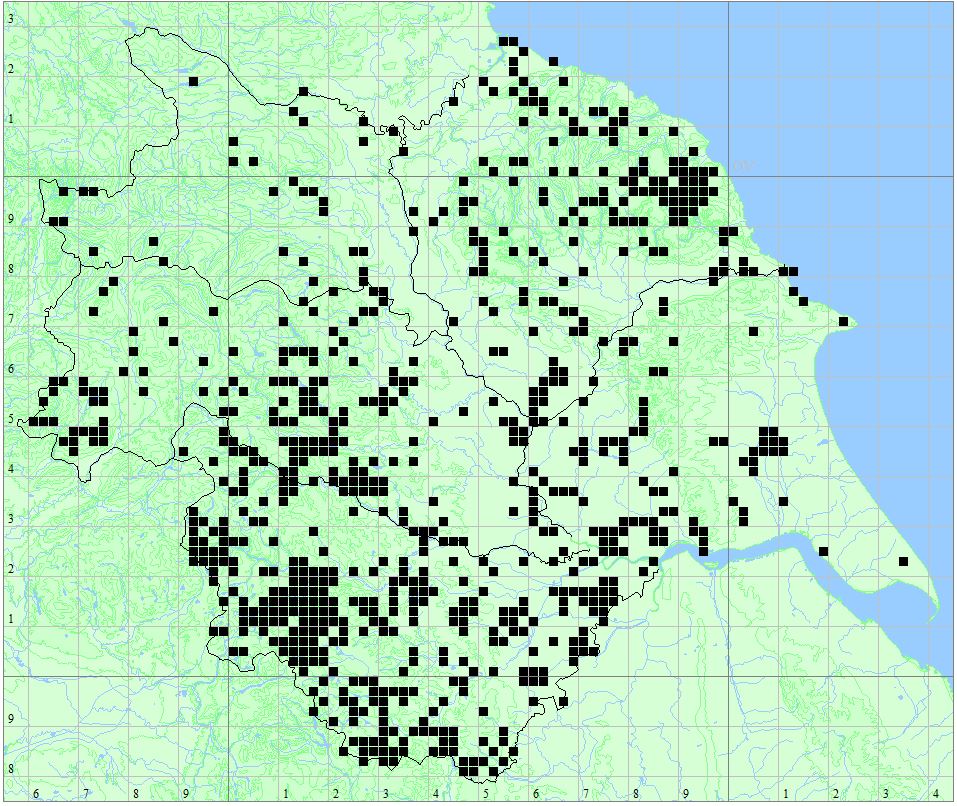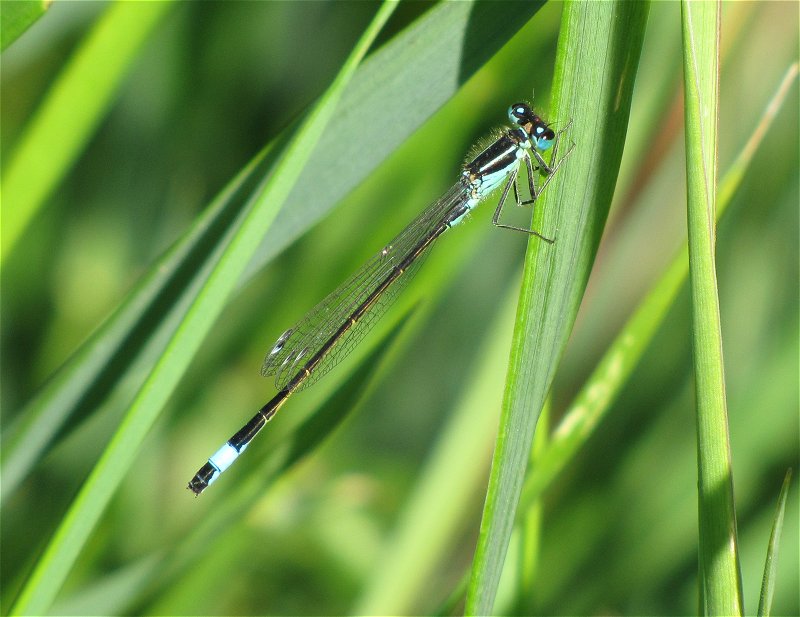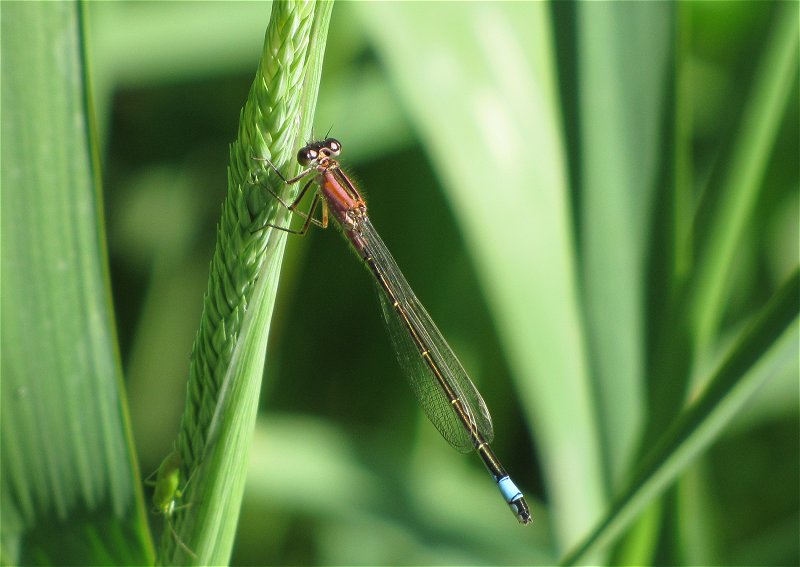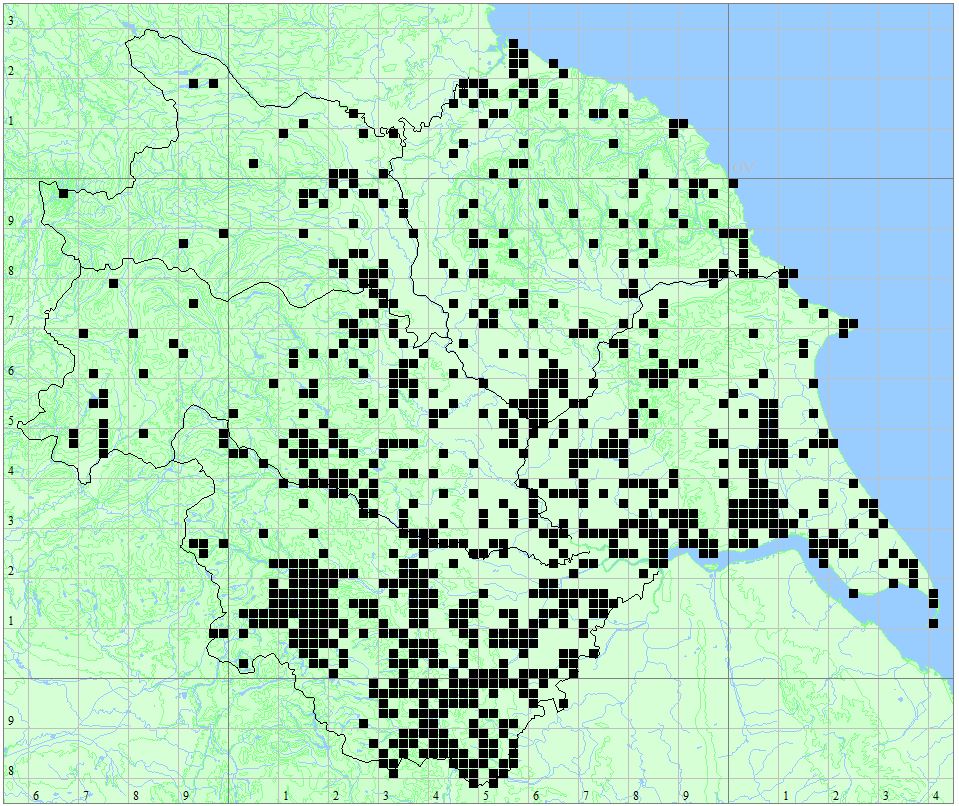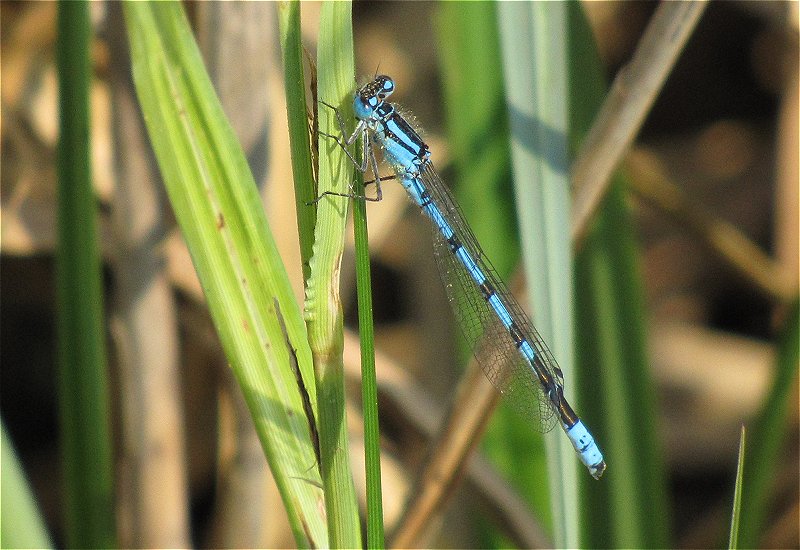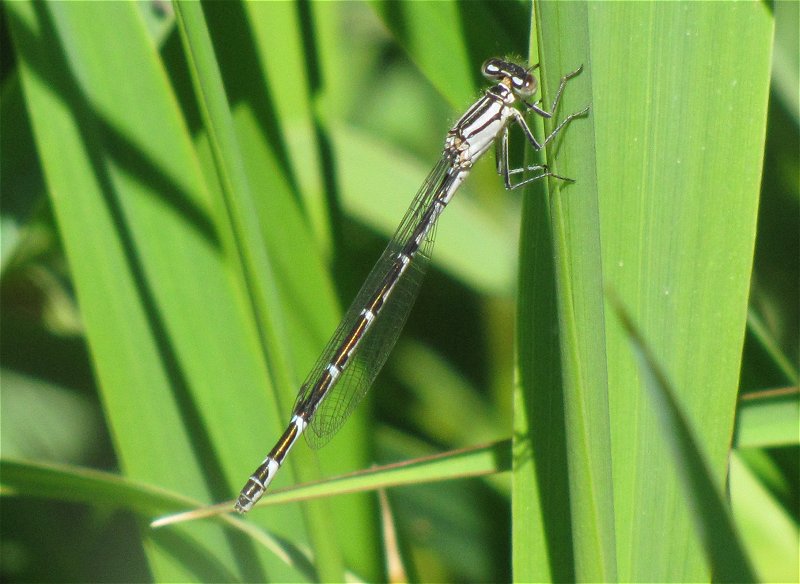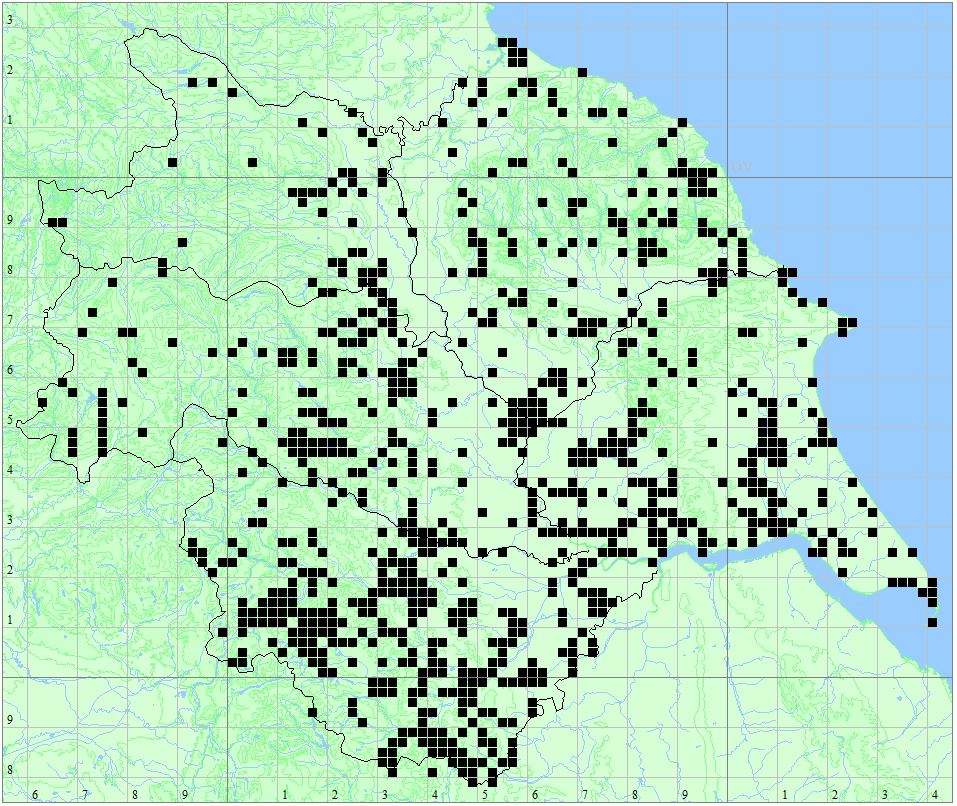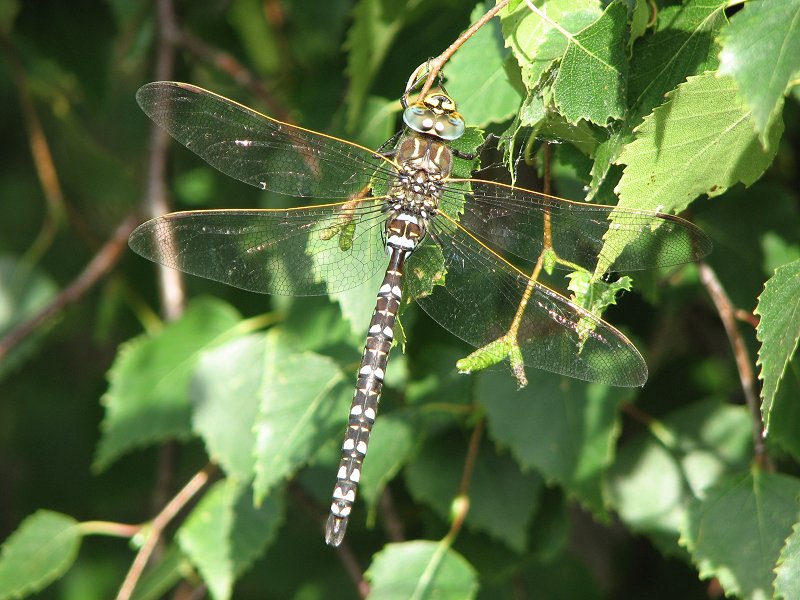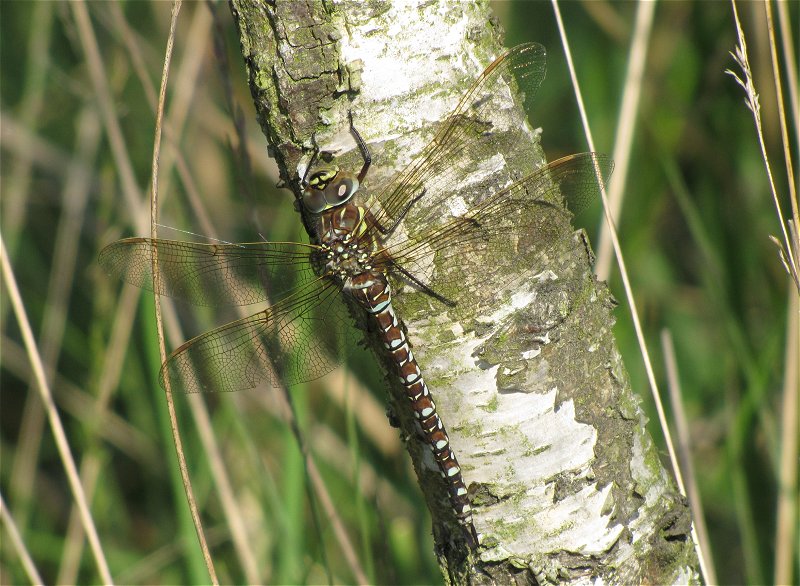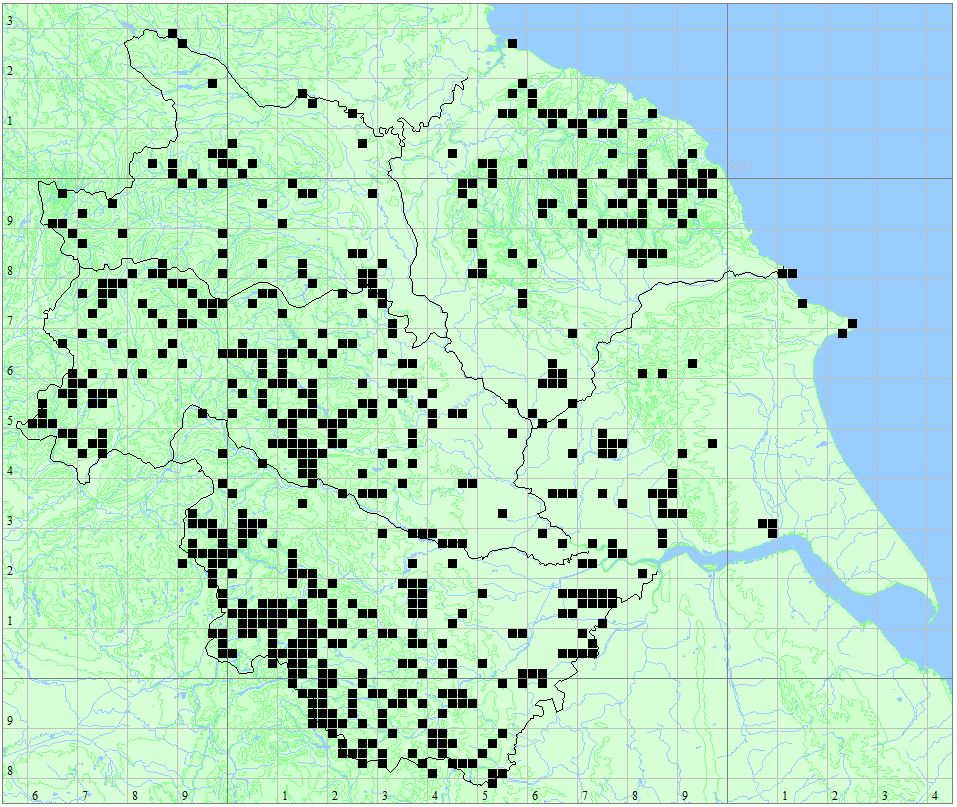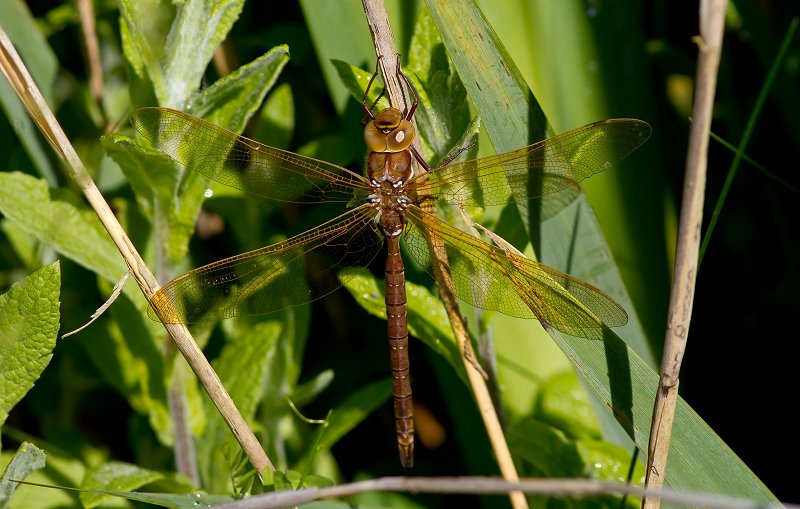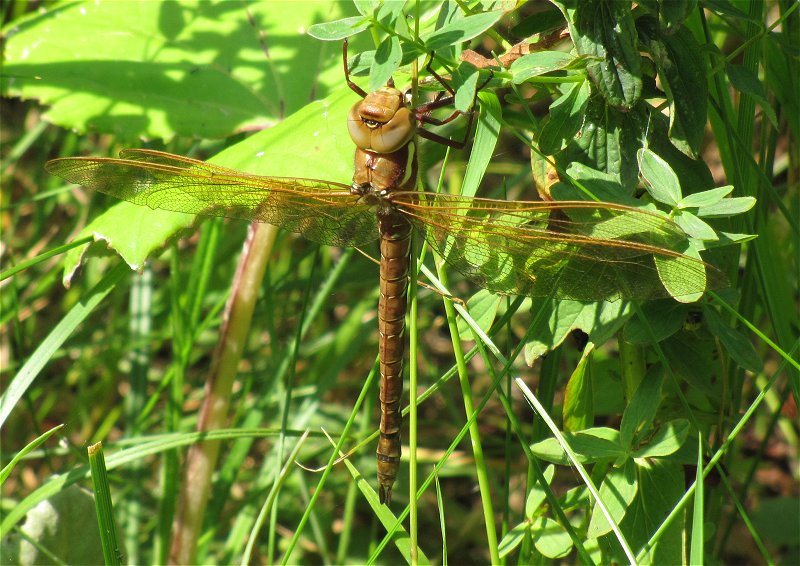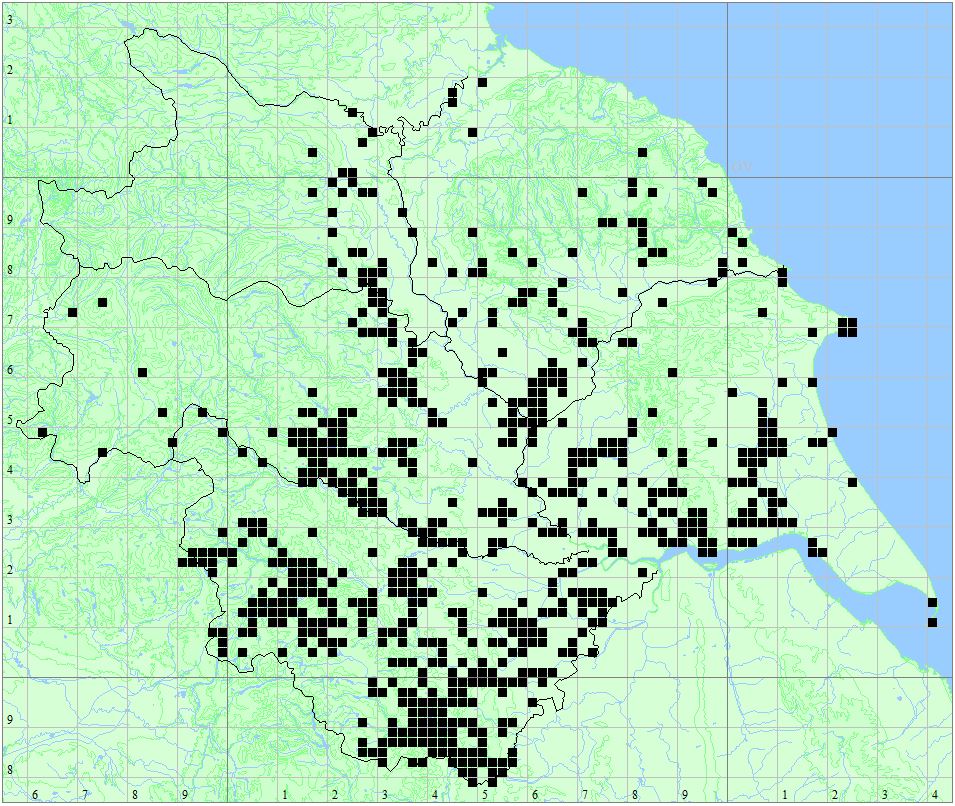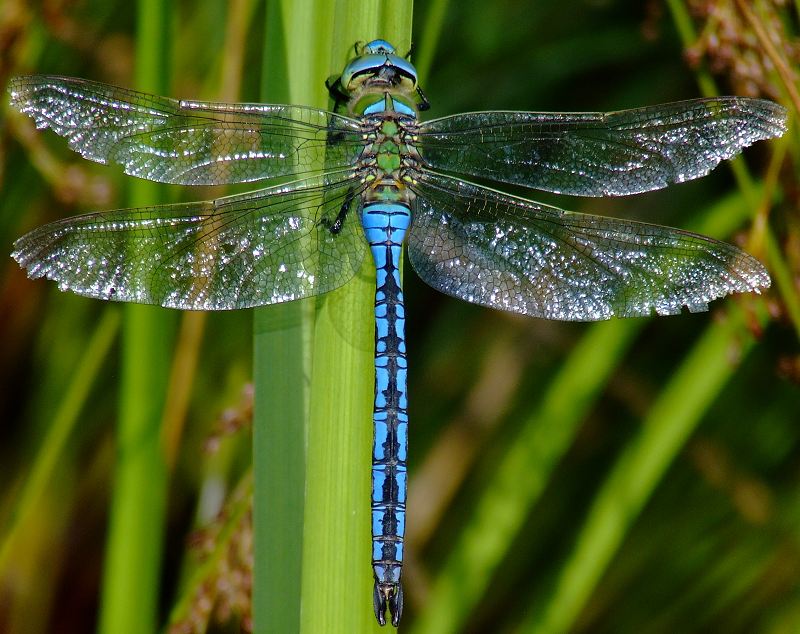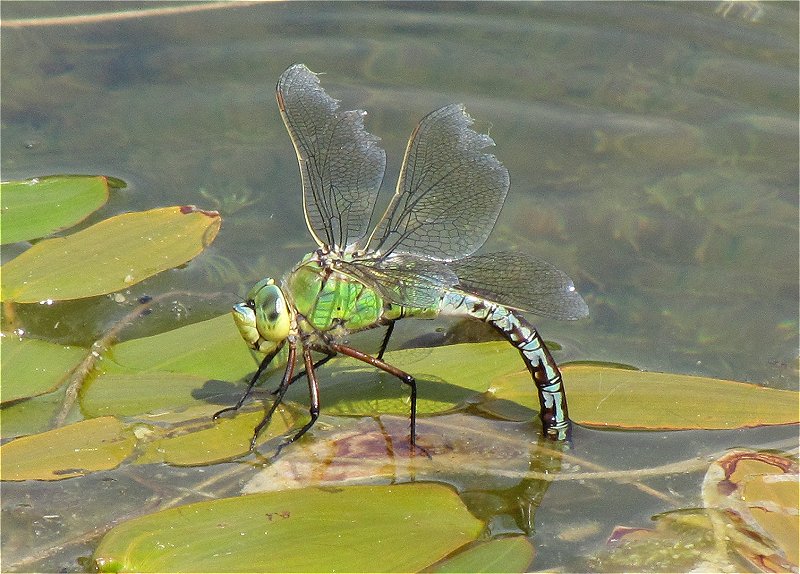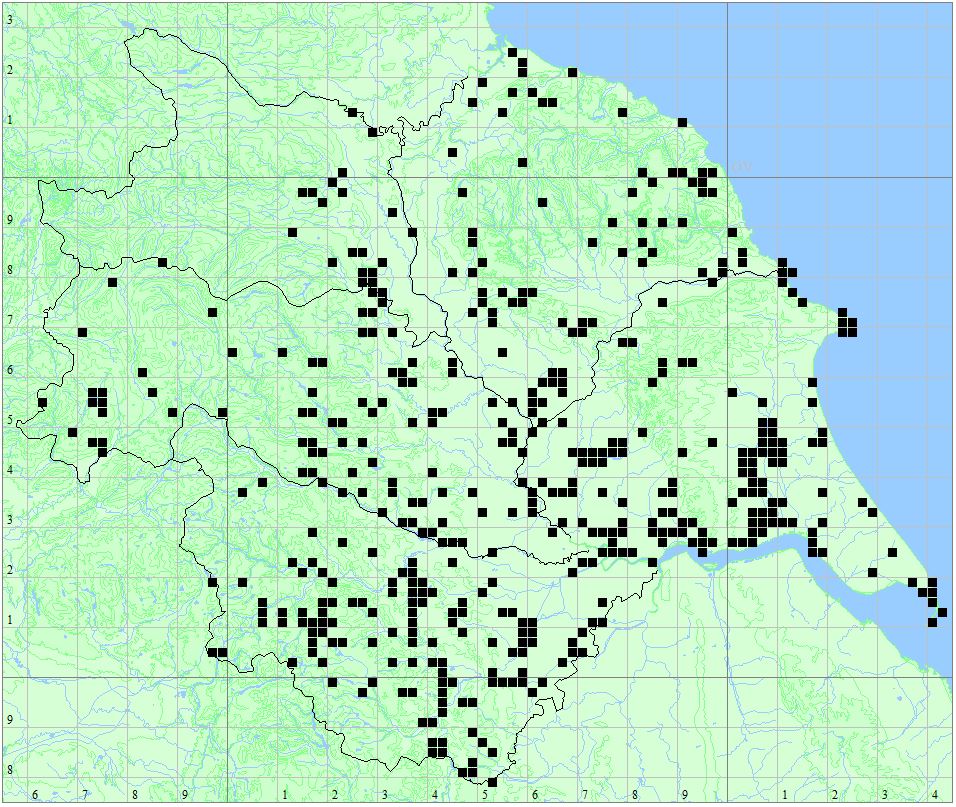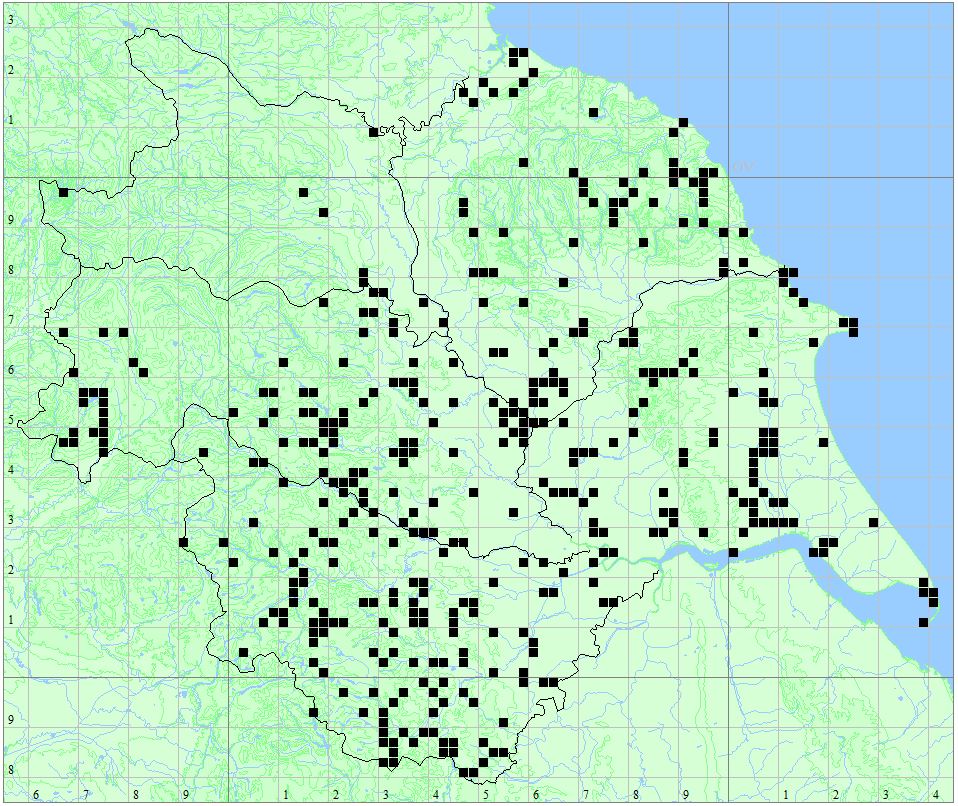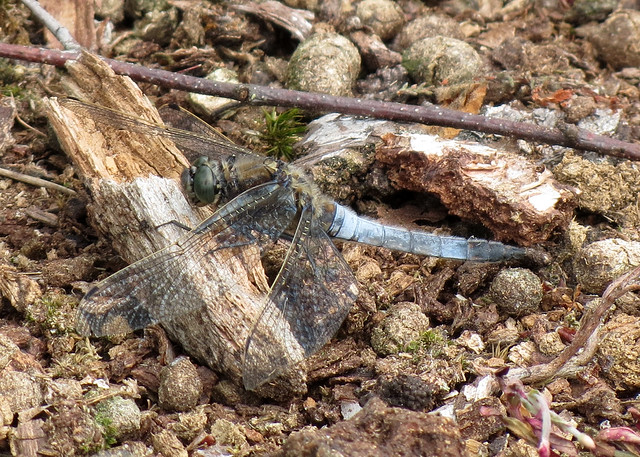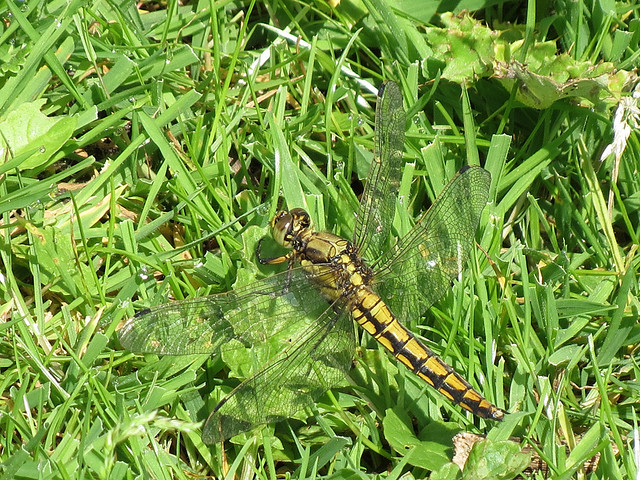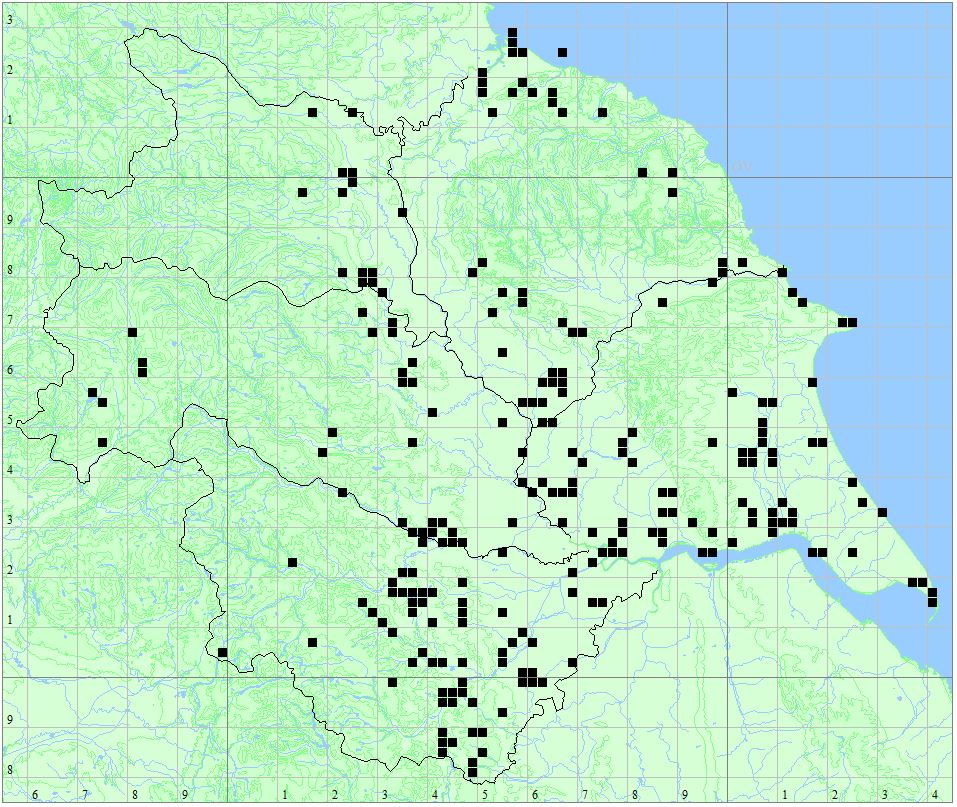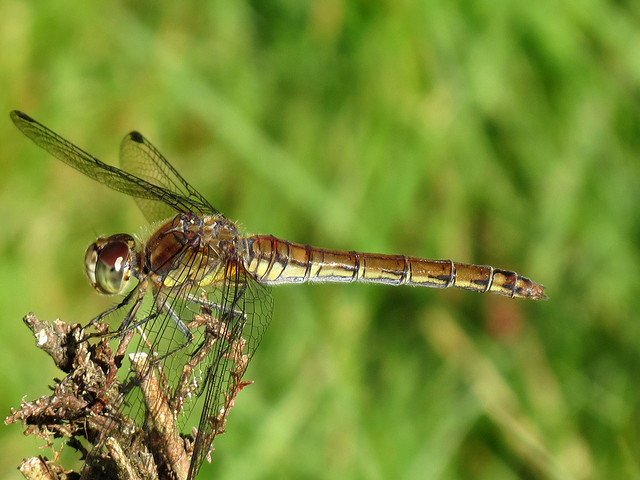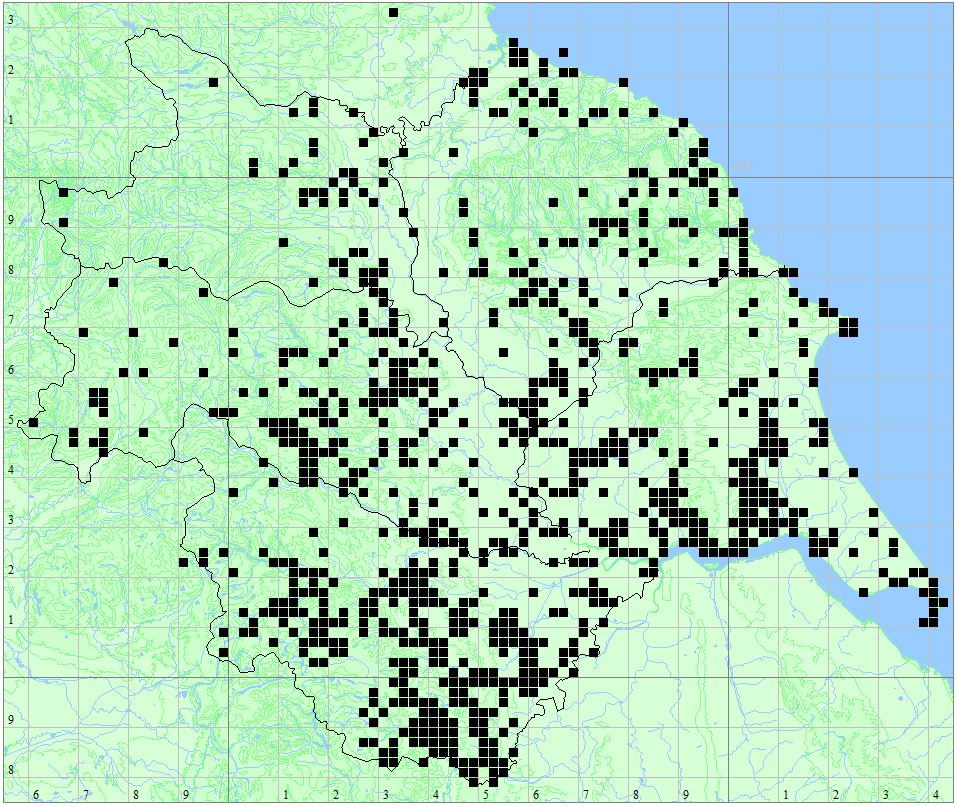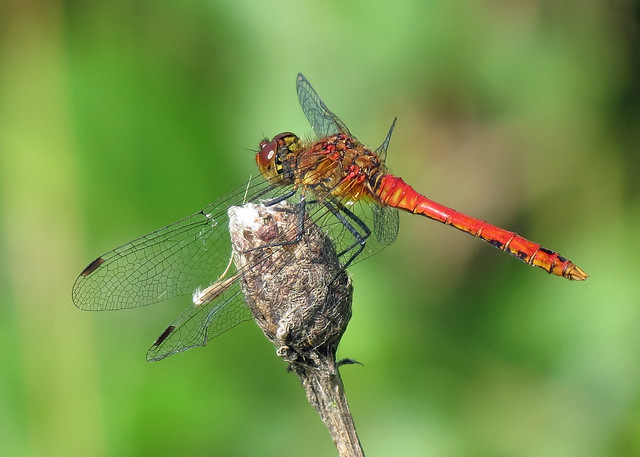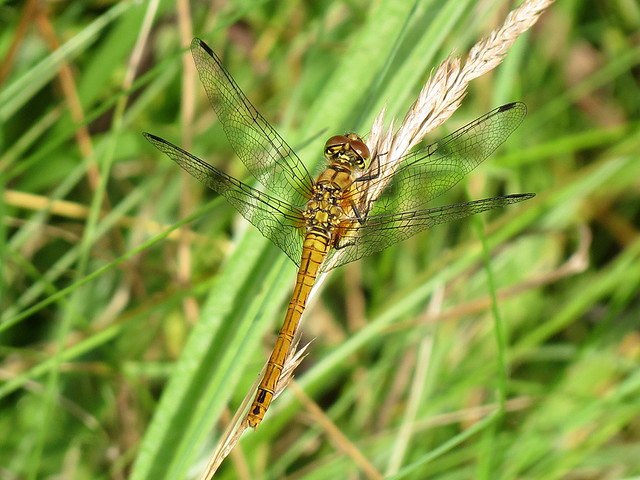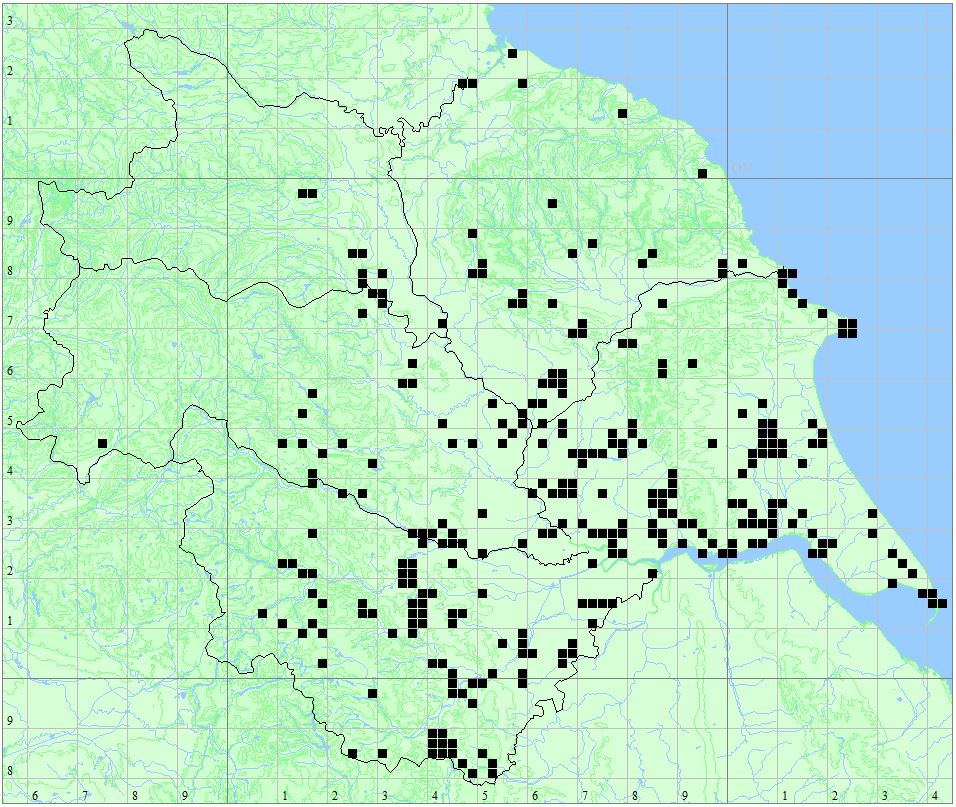<-Previous Species – Next Species->
Length
33-36mm; Wingspan: Male 44mm; Female 48mm; Hindwing 19-24mm
Male
The only red damselfly in Yorkshire and unlikely to be mistaken for anything else. Red abdomen, with black bands on segments 7 to 9. Thorax is black on the top with a red stripe (yellow in immatures). Black areas have a bronze tint.
Male
Female
Occurs in three colour forms. The commonest form is typica, with black bands on most segments of the abdomen. Fulvipes is less well marked than typica and closely resembles the male. Melanotum is a dark from being mainly black, however the antehumeral stripes remain yellow (only yellow when immature in other forms).
Female – typica
Behaviour
This is the first damselfly to emerge each year in Yorkshire. It has a synchronous emergence, all emerging within a three week period, it is therefore shortly after emergence that this species is most abundant. Males emerge slightly earlier than females and also mature more quickly. Copulation lasts for around 15-20 minutes. Eggs are laid in tandem, the female may submerge taking the male with her. The life cycle is two years, on initially occupying a new site there may therefore only be adults found every other year.
Habitat
Has a wide habitat tolerance, including brackish and slightly polluted water, though avoids fast flowing water. Higher abundance in well vegetated, standing water.
Flight Period
Status
Evenly distributed across VC61-64, scarcer in VC65.
Distribution Map
Locations
- Rodley Nature Reserve
- Moorgates Quarry LNR
- Thorne Moors – Humberhead Peatlands NNR
- Thorpe Marsh
- Paull Holme Strays
- Rabbit Ings
- River Foss, Towthorpe Bridge
- Walton Colliery Nature Park
- Pugneys Country Park
- The Yorkshire Arboretum
- Timble Ings
- Fairburn Ings
- Johnny Brown’s Common
- Potteric Carr
- Dundale Pond
- The Tarn, Goathland
- Tranmire Bog
- Fen Bog
- Spurn Point
- Skipwith Common
- Saltmarshe Delph
- Pulfin and High Eske Nature Reserve
- Pocklington Canal
- North Cave Wetlands
- Filey Dams
- Eastrington Ponds
- Broomfleet Washlands
- Noddle Hill Nature Reserve
- Allerthorpe Common
- Tophill Low Nature Reserve
